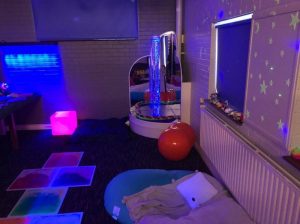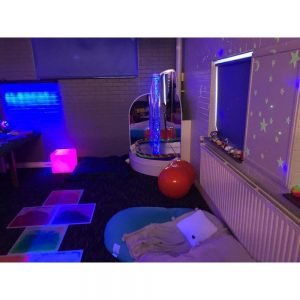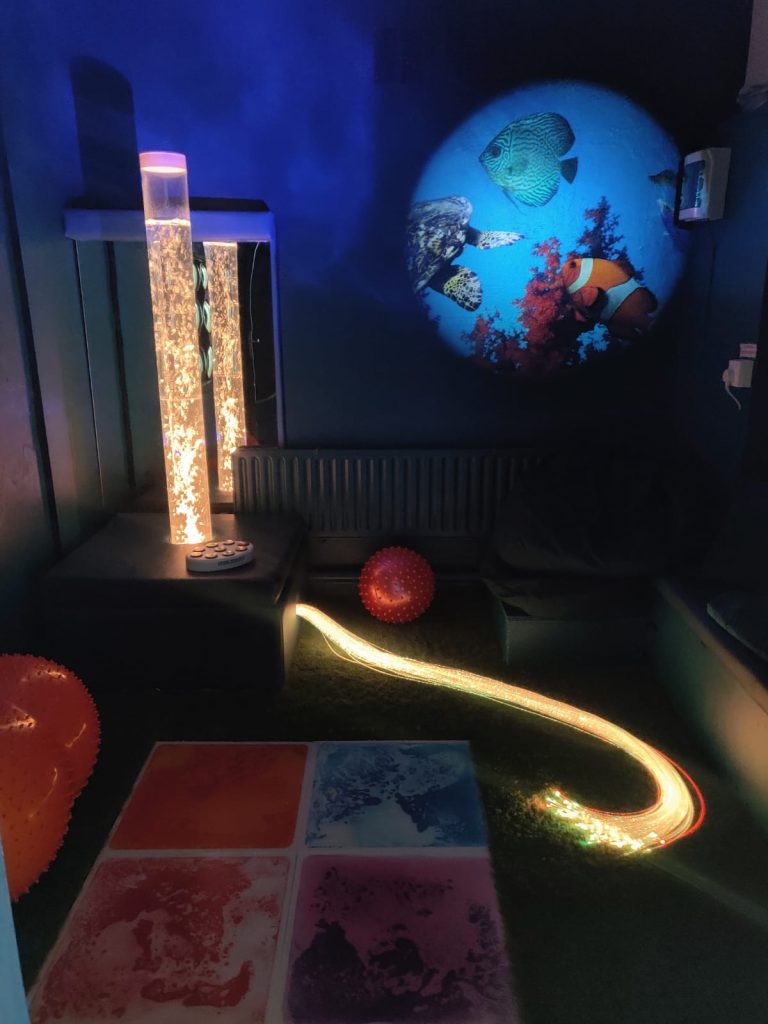If you have a medical emergency, your first thought is to go to the Accident and Emergency Dept of your nearest hospital. Your adrenaline is pumping as you race to check in with medical personnel. There are others like you waiting to be seen. You know will probably have to wait in a long queue and it’s possible you may hear the groans, coughs, or loud voices of people in pain. Depending on the area of the hospital you are in, you may see flashing lights in the corridors, hear announcements over the PA system, see the hospital staff rushing around, and witness patients being transported quickly through the hallways on stretchers. If this experience seems a little unsettling for the nerves, imagine an individual with sensory processing issues. For them this picture is amplified, magnified, and far more unsettling.
Unfortunately, healthcare facilities tend to be quite challenging to navigate for children and adults with Autism. This is largely due to overwhelming sensory stimuli that may be found in a hospital, such as loud noises, crowds, and bright lighting systems that may trigger flight or fight responses. Medical practices must be inclusive of all demographics since they work with individuals from different walks of life. People visit the hospital because of a medical need and should be considered regardless of their circumstances. Often, individuals with Autism may suffer difficulties with their sensory processing, meaning all their senses may be dealing with overstimulation or under stimulation when interacting with a new environment.
The triggering sensory stimuli found in medical facilities can cause anyone facing sensory processing overload or underload to have adverse reactions to their environment, such as withdrawing or becoming agitated. What is considered a triggering sensory input varies greatly, and what is not particularly overwhelming for some, may be the opposite for others. This is why it is important to try and make public spaces inclusive so that everyday tasks are made possible for everyone.
Is there a solution to help create an inclusive environment and ease sensory processing difficulties in a medical facility? Yes!
Sensory rooms are designated areas created to help assuage the results of triggering stimuli from sensory processing disorders. If someone finds themselves overcome by their senses and is uncomfortable, a sensory room provides a safe space to decompress. Hospitals and clinics in Ireland that employ sensory rooms have seen great success for their patients and visitors. Children with Autism need no longer feel uneasy and can instead wait for their check-up in a sensory room to ease their distress. Individuals that feel overwhelmed in hospitals can unwind in the tranquillity of a sensory room and find their peace of mind.
Mullingar Hospital Announces their New Sensory Room
The Regional Hospital Mullingar is proud to say they are the first hospital in Ireland to offer the comfort of a sensory room for people with Autism. The hospital is experiencing immensely positive feedback from patients, parents, and visitors using the sensory room to great benefit.
A Multitask Attendant named Joe Earley is the employee who stepped up to make the proposal for a sensory room within the ED. The idea was to redesign an existing space in the ED to create a sensory room that would take away from the hustle and bustle of the hospital. The sensory room project took one year to complete and is already creating a significant impact on the Regional Hospital Mullingar population.
As mentioned earlier, a visit to the ED can be a difficult experience for anyone but can be especially difficult for children with Autism. A sensory room designed keeping in mind individuals facing Autism, helps ease the tension of the visit. When someone can find a place to destress and take in beautiful lights and calming sounds, they can forget for a moment that they are in a hospital, and centre themselves. For example, a child with Autism may find fluorescent lighting to be a stressful sensory trigger and may require assistance to relax. A sensory room might aid the child in remaining calm in the darker room while admiring the lights and sounds of the sensory room equipment. This sensory room is a welcome addition to Mullingar and they value the positive atmosphere it’s created.
What Is a Sensory Room – How Does It Work?
The origin of the sensory room began in the 1970s as a way for two therapists to help engage their patients in activities of play instead of the common daily tasks. In our present day, these spaces are used in public areas such as hospitals, clinics, libraries, and schools. The sensory room has evolved into a space where children and adults with Autism can use sensory activities to relax or stimulate their senses, as required. Sensory rooms are being utilised across Ireland to aide those with sensory processing disorders and individuals with Autism.
A sensory room is a place meant to provide relief from overwhelming sensory input. These designated areas are helpful to individuals with Sensory Processing Disorders and can help them refocus after dealing with triggering stimuli such as bright lights, loud noises, or crowded spaces.
The objective of a sensory room is to use various equipment to stimulate the senses when someone is dealing with sensory overload or sensory underload. What does sensory overload look like? It typically manifests as agitation, repetitive movement, covering the ears, and overall restlessness. In contrast, sensory underload may look like withdrawing, disinterested behaviour, and fatigue.
Sensory Processing Disorders can also cause sensory seeking behaviour which may have disruptive effects in public spaces, such as spinning, repetitive noises, and chewing on objects or clothing. Sensory rooms are ideal for dealing with any type of sensory need and provide a safe space to help alleviate these symptoms. The space must cater to all the senses, meaning there would be sensory equipment to touch, taste, hear, smell, and look at. Sensory rooms are not only ideal for children with Autism or SPD, but for everyone. These rooms are relaxing and can provide peace to anyone that needs it. The idea is to be able to engage in your present emotion and find a way to calm that feeling. Individuals that are dealing with anxieties or stressors can take a moment and engage in relaxing activities that will help distract them or refocus their mind. For example, if a child is nervous about seeing a doctor and is overwhelmed by the crowd in the waiting room, they can find comfort in the sensory lights that create beautiful patterns on the wall and focus on the movement and colours instead of their appointment.
If you’re wondering how it all works, and whether a sensory room can be implemented in your hospital or clinic in Ireland, it’s time to learn more. There are specialists that can help create the perfect space that is fit for everyone’s sensory needs. Are you curious to learn about how a sensory room can benefit your patient’s senses? Read on.
- Auditory needs — For those in need of calming sounds, sensory rooms can use speakers to play tranquil music. Soothing sounds can also be provided with white noise machines or other sound machines that may play noises such as ocean waves, rain, or a crackling fire. If sounds are overwhelming, you may provide ear plugs or other noise-cancelling devices.
- Spatial needs — The vestibular sensory system is necessary for the body to understand balance and movement. Sensory equipment that highlights physical activity is ideal to help with any spatial sensory issues. A specialist can equip your sensory room with balance boards, swings, spinning tops, and step-a-logs.
- Interoception needs – If someone visiting your hospital or clinic has interoceptive processing issues, then they may have difficulties understanding their body’s messages, such as when they’re tired, hungry, or need to use the restroom. However, there are ways to help with this issue. The sensory room can be fitted with equipment such as yoga mats, bean bags, and safety padding to help with mindfulness activities that may be comforting. With interoception needs, it is about grounding oneself and learning how to listen to the body, so it is important to have elements in the sensory room that promote this concept.
- Gustatory needs— For those that have gustatory needs, it can be difficult to provide the proper sensory activities, but it’s not impossible. Often, these needs are satisfied with ice cubes, edible chewing toys, or different textured noshes.
- Visual needs — Often those with visual overstimulation will find peace in a sensory room because of the calming glow of sensory lights. A sensory room will be darkened but furnished with sensory equipment such as bubble tubes, lighted mirrors, light tables, and fibre optic sensory lights. These items create a peaceful ambiance and promote a relaxed state of being.
- Tactile needs — Touch is an important sense to apply in a sensory room. Tactile sensory stimulation can be provided with various sensory room equipment. Items that are soft, have different textures, or vibrate, can be used to engage in tactile sensory needs. Devices such as vibrating cushions, plush blankets, and plush toys are ideal.
- Olfactory needs — Hospitals and clinics may have odours that are unsettling for children and adults with Autism or SPD. However, sensory rooms can be places of respite away from unfamiliar smells that are overwhelming. With the help of aromatherapy sensory equipment, comfort can be provided to those that need it. Items such as scented playdough, aroma diffusers, or scented stickers can be used to help with olfactory stimulation.
- Proprioception needs – If an individual is dealing with issues in processing proprioceptive sensory inputs, they may have difficulty understanding their body’s movement, position, and location. Deep pressure therapy is cited to be a great relief to those that deal with this difficulty. Sensory rooms can be outfitted with equipment that promotes deep pressure, such as Cocoons, compression vests, squeeze machines, body socks, and weighted blankets.
The Wide Application of Sensory Rooms – Help for Children, Adults, and Psychiatric Patients
Sensory rooms across Ireland are providing safe spaces where children, families, and adults facing Autism and SPD can find relaxation. These areas are especially helpful for aiding in self-regulation and can be useful to anyone that may be dealing with overwhelming sensory inputs. There are so many stories about how sensory rooms have become safe havens for those that need a space to centre themselves, whether it is a parent talking about their child with Autism or an adult that has SPD and needs a place to take a moment to themselves. In medical facilities, these spaces are garnering positive results within the population of children, adults, and psychiatric patients. If you want to know how sensory rooms can provide positive mental and physical health outcomes, continue reading.
- Meditative environment — Multisensory rooms are spaces that promote relaxation and stimulation. Sensory room specialists create environments that are tranquil and great for meditation but also meet the needs of all sensory processing disorders.
- All ages — Sensory rooms are not only for children. They are designed with all ages in mind. Sensory room equipment can be used by anyone to aide in self-regulation.
- Physical Activity — There is a variety of sensory room equipment that can provide physical activity without the stress of traditional exercise regimens. With the use of active play equipment such as climbing sensory walls, mini trampolines, and hideaway dens, you can create positive relationships with physical activity.
- Mental Activity — Sensory rooms can provide active mental stimulation for neurodivergent patients. Through the use of different sensory room equipment, cognitive functions, socialization, and mood may be improved.
- All applications — For medical environments, sensory rooms are great spaces to promote a positive experience when dealing with a medical exam or session. These areas are helpful to make sessions with medical professionals fun, and less stressful. Medical professionals such as nurses, therapists, and psychologists can use a sensory room to conduct their evaluations and help their patients feel at ease.
Increasingly Wide List of Public Services Adopting Sensory Rooms – Hospitals, Clinics, Libraries, Schools
Successful applications of multisensory rooms have been seen in public spaces throughout Ireland. Incorporating areas that cater to Sensory Processing Disorders has given way to positive feedback from the public. These areas are becoming more commonplace, and a shift in what is necessary for public spaces to be ideal for everyone, is changing. Sensory rooms are now being seen as essential in promoting positive mental and physical health. To improve their facilities, public spaces such as hospitals, clinics, and libraries are adopting sensory rooms within their offered services. These areas are now being designed all over Ireland with the intention of providing comfort to those in need, with specialized sensory room equipment to cater to all sensory stimuli.
Studies have shown that sensory rooms have been vital in improving different skillsets and helping people work on their sensory triggers. Individuals who use these spaces are often much more calm, relaxed, and happier interacting with their environment after consistent use of a sensory room. These spaces are versatile and can offer comfort to anyone who needs to feel supported when facing an overwhelming event or sensory input. The implementation of sensory rooms in public spaces is gaining increasing recognition and soon may be as customary as a waiting room.
The Diversity of Sensory Rooms – One for Every Budget, Scale, and Needs
The design of sensory rooms is determined by the demographics represented in the public space. For example, libraries would need to cater to all ages to have an effective sensory room, while a paediatric office may have a sensory room that only caters to children with Autism. All sensory rooms must meet the same requirement—they must function as a retreat from stressful sensory inputs. This requirement can be met for any budget or scale. But when deciding on what is best for your hospital or clinic, it is best to think about the needs of your patients and visitors.
Do your patients need a calming or interactive environment, or a combination of both?
If you’re unsure of what is needed to meet the individualised sensory requirements, keep in mind that most sensory rooms use a combination of sensory equipment. This ensures that everyone’s needs are addressed. There are plenty of ways sensory room experts in Ireland can design a room that has something for everyone. If you want to know how a sensory room can be created to address all your requirements, take a look at our recommendations.
- Assess your budget – As a medical facility, it is important to understand your budget before any major project. If you have a proposal with a budget in place, you can then account for certain specialised sensory room equipment. You can meet your budget by purchasing affordable sensory items such as fibre optic sensory lights, projectors, noise machines, and plush toys.
- Consider your scale – While it’s better to have a large sensory room, you may still create a successful sensory room with a small space. All that matters when you design a sensory room is that your space is a welcoming environment. A sensory room specialist can help you use different techniques to create the illusion of a large room. You can use hideaway dens to create a space within the sensory room, mirrored sensory wall panels to reflect light, and sensory lights to make the space appear larger than it is.
- Evaluate your Requirements – Consider your patients’ requirements and inform your sensory room expert of the sensory room equipment you need. If you need a combination of calming and interactive sensory room equipment, they can help you find exactly what is necessary to meet those needs. For example, bubble tubes provide both a calming sound and the interactive movement and light needed for sensory stimulation. It is important to consider what would be the best equipment for your population so that your practice can provide a successful sensory room.
If you need help setting up a sensory room in your hospital or clinic in Ireland, the specialists at Total Sensory Solutions can assist you. We have sensory room packages and sensory room equipment that can meet the needs of your patients and help you provide a welcoming space for any population. We have over 25 years of experience in creating sensory rooms designed to meet any and all multi-sensory environment requirements.
If you’re interested in creating a sensory room for your hospital or clinic— call us on 01 8414933 or send us a message online.







